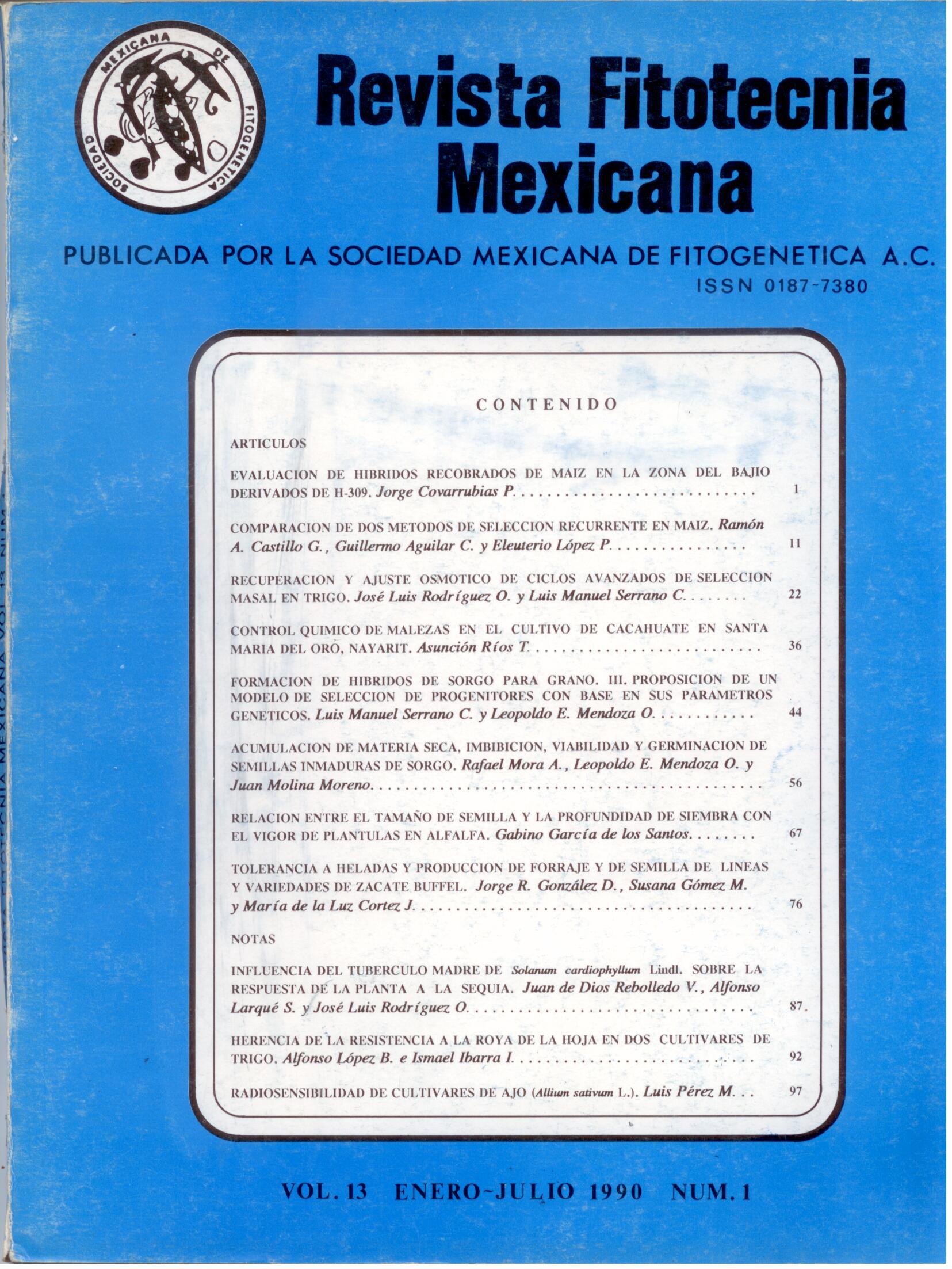RECUPERACION Y AJUSTE OSMOTICO DE CICLOS AVANZADOS DE SELECCION MASAL EN TRIGO
Contenido principal del artículo
Resumen
Con el propósito de evaluar los cambios mortológicos y fisiológicos ocurridos en materiales de trigo Triticum aestivum L. en respuesta a la selección masal, así como la capacidad de recuperación después de sequía, se estudiaron 5 genotipos en los que se incluyó el material original (compuesto balanceado F2, CB F2). y dos ciclos de selección masal bajo sequía con recombinación (ciclos 2 y 5, SMVS CR2 y SMVS CR5) y dos ciclos de selección masal sin recombinación, efectuada también bajo condiciones de sequía (ciclos 3 y 6, SMVS SR3 y SMVS SR6), a los cuales se les dio tratamientos de riego y sequía. El tratamiento de sequía fue dado en dos
ciclos consecutivos, que consistieron cada uno en suspensión del riego hasta que se presentó marchitez permanente y luego riego de recuperación a capacidad de campo. Las variables fisiológicas consideradas fueron tasa transpiratoria, potencial hídrico y sus
componentes (Potencial osmótico y potencial de turgencia) y ajuste osmótico. Se midió también el peso seco de la parte aérea, el de la raíz, el de grano y se determinó la relación raíz/parte aérea. Los resultados mostraron que los ciclos avanzados de selección bajo sequía recuperaron en un grado mayor su tasa transpiratoria después del riego de recuperación respecto al material original. Los ciclos más avanzados, CR5 y SR6, mostraron una capacidad de ajuste osmótico mayor que el material original y que los ciclos menos avanzados. Respecto al peso seco de los diferentes órganos, no se observó una tendencia clara de los ciclos de selección respecto al material original.

